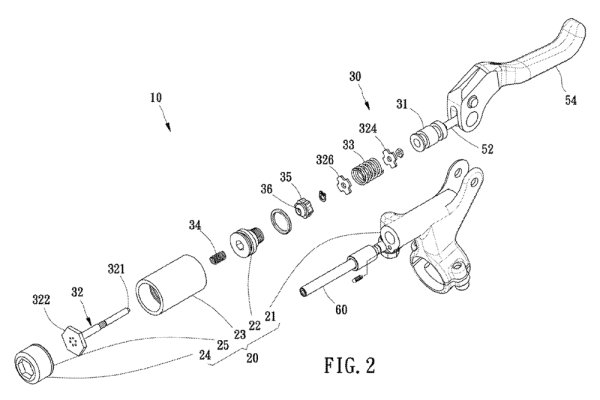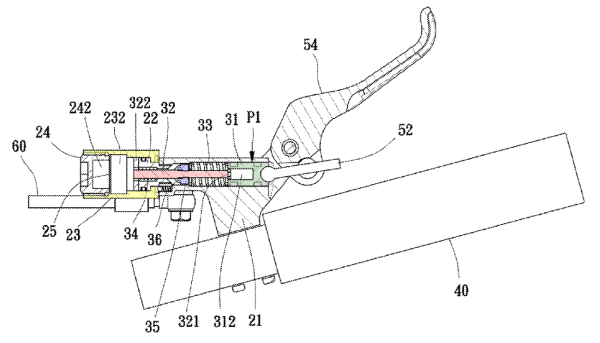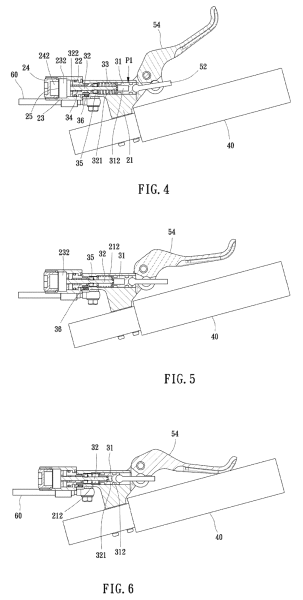Free stroke is the term used to describe how much lever pull you have on a hydraulic braking system before the pads actually start moving toward the rotor. Higher end brakes from most brands have a pad contact adjustment to let you dial in the free stroke, and the good ones actually provide a discernible effect. Avid has it, as do Shimano, Magura, Hayes, FSA, Formula, etc.
And all of them use a design that places the adjustment components inline with the fluid’s flow from the master cylinder into the hose. It’s worked so far, so what could possibly be wrong with that design?
Shown above on FSA’s K-Force brakes, the red dial allows for pad contact adjustment. Internally, it tends to move the piston’s sealing point further or closer to the port, changing the point at which fluid starts moving into the hose and, thus to the calipers to actuate the brakes. (cutaway photos of these brakes are here)
It works, but Tien Hsin Industry’s patent application claims this type of design introduces complexity to the assembly process and more seals and parts in a position vulnerable to leaks. The solution? Separate the pad contact adjustment system from the fluid flow. Here’s how they did it:
THI simply moved the free stroke adjustment dial to the opposite end of the master cylinder. Or, rather, they put the exit port for the fluid to enter the hose between it and the piston. Here’s how it works, based on the patent description:
The free stroke adjuster knob (yellow) turns the rod (pink), which slides the nut seal (purple) closer or further from the port between the first chamber (33) and the second chamber (22). As the brake lever is pulled, the piston (green) pushes the rod simultaneously until the nut seal hits the end of the channel and closes the port between the two chambers. Once that port is closed, the piston continues to move, sliding over the rod and forcing fluid into the hose. The fluid then pushes through to the brake caliper and moves the pads closer to the rotor, just like normal.
The secret to this design is the dual chamber system. Brake fluid sits in both, and the membrane (25) sits on the second chamber’s outside end to handle fluid expansion. When the brake lever isn’t being pulled, fluid can flow between both chambers. Once you start pulling the brake lever, the nut starts moving to close off the second chamber and thus force fluid into the hose. By turning the free stroke adjustment knob, you control how much the lever can be pulled before the pads start moving in the caliper. Here it is in action:
Click to enlarge. The patent was filed all the way back in 2012 and was just published October 7th, 2014.
Now, here’s the really interesting part: Tien Hsin could be considered FSA’s owner, depending on how you look at it. And the inventor on the patent is Jason Miles, an employee in FSA’s U.S. offices and engineer on their brakes.
We spoke with Herb Tai, FSA’s brake product manager, who told us: “We’ve got a number of new (rim) calipers for road bikes coming out for model year 2016. And we’re working to expand out hydraulic line up. The whole reason we got into hydraulic mountain bike brakes was to grow the technology, and the mountain bike brake market is already pretty crowded.”
Read into that what you will…



